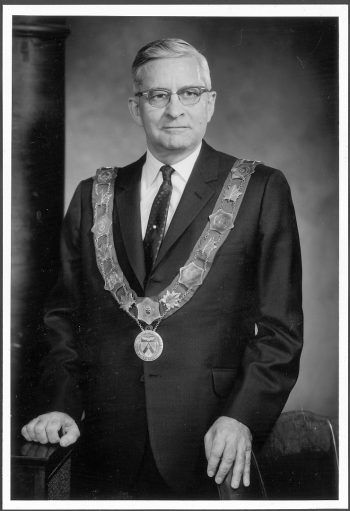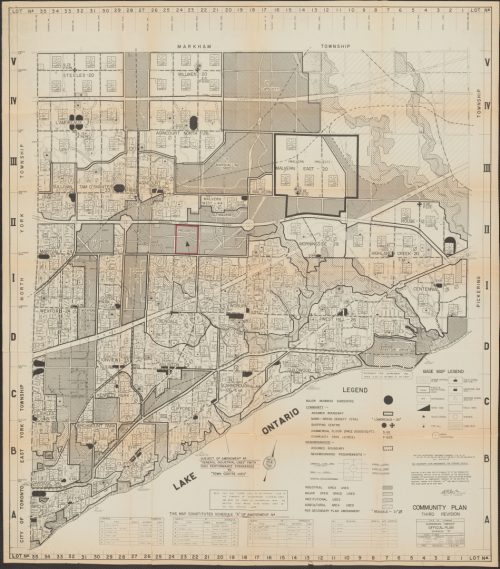

Albert Campbell (1910-1973) was elected reeve of Scarborough in 1957. He continued in that role until 1967, when his title was changed to mayor – the first for the Borough of Scarborough. His final political position was Chairman of Metropolitan Toronto, taking that office in 1969.
Campbell’s tenure at Scarborough’s helm overlapped with a population and urbanization boom. Campbell publicly lamented in 1966 that his beloved municipality was routinely characterized as mere urban sprawl, having a municipal office building on Eglinton Avenue “sandwiched between a Chinese restaurant and a car sales lot.” Believing that Scarborough needed both modern civic facilities and a place to bring people together, Campbell sought to create a proper downtown for his expanding municipality.

In considering a location for his new town centre, Campbell and his officials soon focused on several lots of mostly vacant farmland south of Highway 401 between Midland Avenue and McCowan Road. Situated at Scarborough’s geographic centre, with little but the Bick’s Pickles plant nearby, this industrial-zoned land had been recently purchased by developer Triton Limited on behalf of Eaton’s, the department store giant.
Having more land than it needed, and aware of Campbell’s objectives, Triton officials suggested that the site was perfectly located for a broader Town Centre project that would bring together government, education, business, retail, and culture, all in one place. In 1968, Triton presented its proposal for “the first totally planned Town Centre in North America.” Within weeks, Scarborough Council gave the plan a green light and amended the land’s zoning plan, re-designating it for “Town Centre uses.” Under Ontario’s Planning Act, the province had final input for the subdivision plan. It approved conditional on land being made available for the municipal and Board of Education offices. Triton transferred 8.4 acres to the municipality, which then purchased an additional five acres.
A collaborative project, Triton would build the Scarborough Town Centre shopping mall, while the municipality would build the new civic centre. Campbell and his successor as mayor, Robert White, were now ready for an architect’s feasibility study and design for Scarborough’s new Civic Centre. Early in 1969, that task went to a rising star among Canadian architects – Raymond Moriyama.